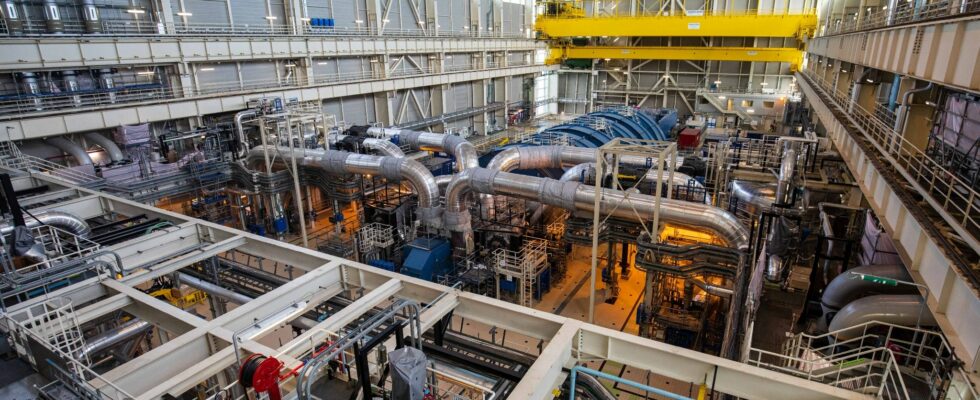The work should have been completed in five years. But the construction of the European pressurized reactor (EPR) in Flamanville (Manche), lasted seventeen years. The cost of the project, initially planned at 3.3 billion euros, also fell short. In 2020, the Court of Auditors estimated the total amount of expenditure for the EPR at… 19.1 billion euros.
So, when Luc Rémont – CEO of EDF – announced at the 24th Aix Economic Meetings on July 6th the “imminent” launch of the EPR “divergence”, we said to ourselves that the end of the ordeal was near.
The start-up of the Flamanville reactor
Divergence is a jargon word from mathematics. In nuclear power, it corresponds to the initiation of the chain reaction that produces electricity. “Using a neutron, we break the nucleus of a uranium 235 atom. When it breaks, it will release three neutrons which, projected under the effect of the first shock, will break other nuclei of uranium 235 atoms, causing new fissions”, summarizes Emmanuelle Galichet, teacher-researcher at the Conservatoire national des arts et métiers (CNAM).
The fission of nuclei causes a significant release of energy, in the form of heat. This heat is used to make water vapor which drives turbines, which convert the rotational motion into electricity.
“There is emotion,” imagines Emmanuelle Galichet, as the launch of the 57th reactor in the French fleet approaches. “I think the teams are relieved. They wanted to show that they were still capable of carrying out projects of this scale and technicality,” she analyses.
Before the start of construction of the Flamanville reactor, it had been almost two decades since French nuclear engineering had embarked on such a project. The construction of Civaux-2, the last reactor put into service before Flamanville-3, began in 1991, under the presidency of François Mitterrand.
Flamanville-3, the name of the new reactor that will accompany the two already present on site, is a reactor of the EPR generation, designed to avoid the Chernobyl accident of 1986. During the Soviet nuclear disaster, the core of the reactor had melted, subjected to excessively high temperatures. The EPR was designed to anticipate overheating.
There are three others in the world: two in China and one in Finland. This will be the most powerful reactor in the French fleet, capable of producing 1,600 MW, the capacity of the two old reactors at the Fessenheim plant (Haut-Rhin), which was definitively closed in 2020.
No further delays expected
The engineers are now in the final “hot tests” stage. During these tests, the circuits are tested under the reactor’s operating conditions, namely a pressure of 150 bars and a water temperature of around 300 degrees Celsius.
The start-up of the reactor works like a long-haul flight. Landing and take-off are the most technical moments. “The divergence requires seasoned operators to stabilize the reaction,” comments the physicist.
“We’ve been doing this for fifty years. Every eighteen months, we have to renew the fuel in each reactor. Each time, we start the same procedure,” reassures Emmanuelle Galichet.
After the divergence, Flamanville-3 will have two more steps to go through. First, the “coupling”, which symbolizes the connection to the electricity grid, is done at 25% of the reactor’s power. It will take place before the end of the summer, according to EDF. Finally, full-power production of the reactor’s resources is planned for the end of 2024. Flamanville-3 will then be able to supply 3 million homes. Finally, all good things come to those who wait.
